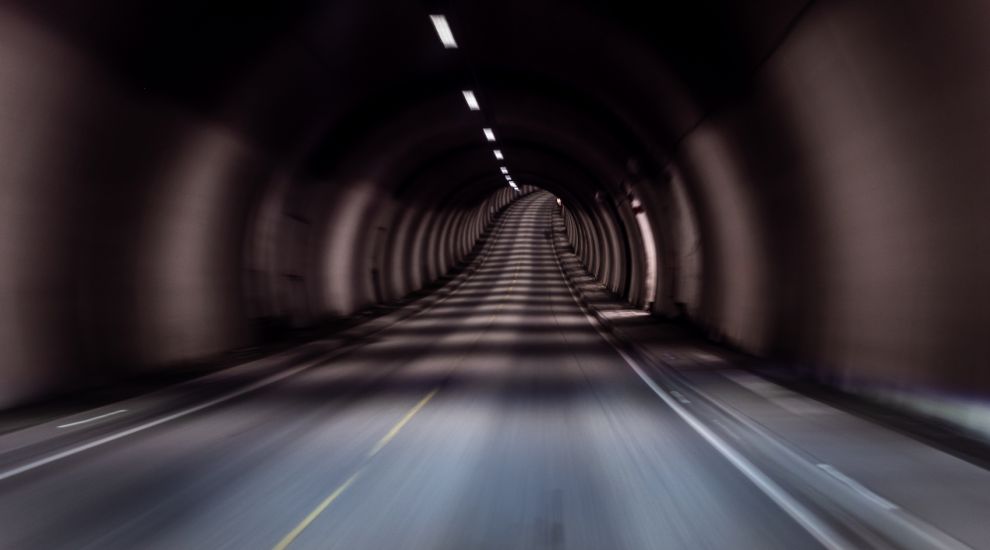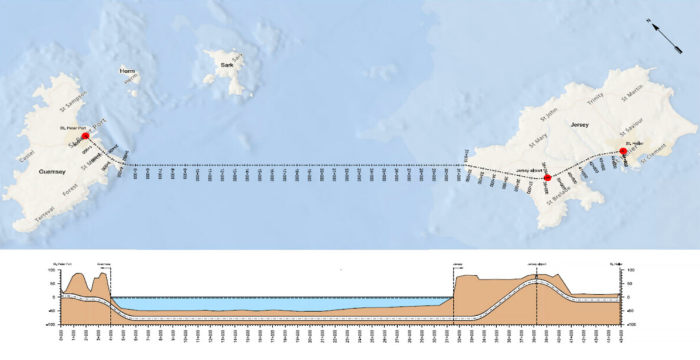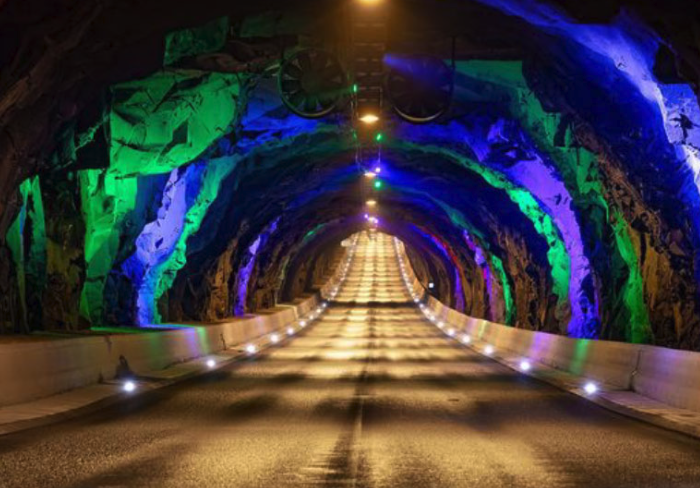


A sub-sea tunnel linking Guernsey and Jersey to France would be in the running for one of the longest sub-sea tunnels in the world – beating off competition from Japan and the Channel Tunnel itself.
While that might sound outlandish, 'tunnel-visionaries' on a tour of the Channel Islands this week to woo politicians and industry leaders with the project insist that such a project with a fixed rail link is eminently possible and can be done commercially to help solve some of the biggest challenges facing the community.
Connect 3 Million want both governments to scope the technical feasibility of such a connection, before setting up an arm's-length company to carry out the rest of the work with government representatives kept informed.

Pictured: The team want to look at the link between Guernsey and Jersey first.
It estimates such a link could see trains travel from St Peter Port through Jersey – the distance between the islands alone is around 40km – and into Normandy within an hour across the over 80km stretch.
Currently, the rankings for the longest under-sea tunnels in the world are:
Seikan Tunnel Japan - 53.9km total
Channel Tunnel - 37.9km
Toyko Bay Aqua Line - 15km
Bomlafjord Tunnel Norway - 7.8km
Eiksund Tunnel Norway - 7.7km
Martyn Dorey, a former Chamber of Commerce President and tunnel enthusiast, told audiences in both islands that a reasonable estimate of 24,000 passenger movements per day.
They also assume a 6% growth of traffic year-on-year after that.
Costs per metre could range between £10,000 and £50,000.
A cost of around £10,000 per metre of tunnel is assumed, with estimates putting the whole project at £1bn.
As an example, he said that personal cost of £30 return would see £263m of income in the first year, with 6% growth of traffic assumed per year after that.
“Tunnels are not costs. They’re assets which generate revenue. We’re not talking hospitals.”
But Mr Dorey acknowledged that public skepticism needed to be overcome; both on the points of possibility and necessity:
“We need to take people with us on a journey. We are in the realms of reality, not fantasy."
Since the turn of the century, the Faroe Islands have embarked on an ambitious programme of tunnelling to connect its capital with the rest of the jurisdiction.
The 15 islands housing a population of 54,000 have been brought closer together with direct road access, with a series of tunnels coming online from the early noughties right up to 2023.
Another 23km long tunnel is now in the works to connect the most southerly isle to the network.
Teitur Samuelsen, CEO of Eystur- og Sandoyartunlar, the Faroe tunnel company, said this has been possible in for a smaller population with an economy valued less than Guernsey and Jersey at £3.65bn.
The government fronted up £46m for the project, and also guaranteed a subsidy to investors in case traffic numbers were lower than predicted causing a longer than expected payback period.

Pictured: The Suðuroyar tunnilin will link the island of Suðuroy to Sandoy.
But the earliest tunnels have already paid back the costs, with the latest ones set to be in the green within 15 to 20 years.
Traffic is increasing all time, Mr Samuelsen said, and one of its tunnels completed in 2020 filled with art went viral, even being named by Time magazine as one of the greatest places to visit.
The biggest risks in major projects like these are interest rates and geology, he added.
Arild Sovik, Network Director at the Norwegian Tunnelling Society, said at any one time there are 50 sub-sea tunnels under construction, and another 50 in the planning phase in the country.
He has personally overseen more than 40 tunnels and says the country's experiences improve by the day, while making every mistake possible throughout the infrastructure programme.
Currently Norway is overseeing construction of the world's longest and deepest sub-sea tunnel connection.
He said tunnels do cost more to operate once constructed than bridges, but are more attractive than above-water transport solutions.
Eivind Grøv, Chief Scientist at SINTEF in Trondheim, who has been involved in projects in Scandanvia, Malta, and China said the key things the islands need to know now are the depth of the soil and sediment on the seabed, the depth to the top of the bedrock from there, the quality of the bedrock, and fault zones on the tectonic plate.
Any tunnel fully excavated through rock, as envisaged by Connect 3 Million,would need to be 50 metres below the top of the bedrock, he added.
All this can be investigated through seismic methods, or more costly core drilling for samples.
These investigations are key to determine how far trains need to descend and climb out of the tunnel at each end.
The idea of a tunnel connecting the islands to France has been on the agenda for a number of years – Express spoke to Martin Dorey back in 2021.
Listen below to the podcast or search Bailiwick Podcasts with your favourite provider...
Comments
Comments on this story express the views of the commentator only, not Bailiwick Publishing. We are unable to guarantee the accuracy of any of those comments.